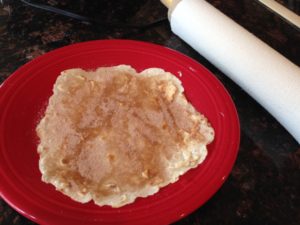
I made lefse! OK, actually I helped my mom and dad make lefse, but that doesn’t sound as impressive. What the heck is lefse, you ask? Well it’s a Norwegian crepe, kind of like a potato pancake. To eat it, you spread butter on one side, generously sprinkle if with cinnamon sugar, then roll it up. Here in New Mexico, locals might refer to it as a Norwegian tortilla, but I’m pretty sure a tortilla is really a Mexican lefse. Either way, these were a special treat at our house growing up, as only Grandma Gunda knew how to make lefse. In Minnesota, you could buy lefse in the grocery store, but it was thick and tough and triangle shaped, like it was made by machine. Homemade lefse is very thin and delicate, and truly fantastic. When Grandma brought out the plate of lefse after big family dinners, the grandkids attacked it like a pack of starving animals, elbowing each other to be sure we got our share, then fighting over the butter and cinnamon sugar so we could be the first to start eating.
I’ve been too intimidated to try making lefse myself for like 25 years. But I started with the recipe by Bea Ojakangas, the “Lefse Queen”, who just happens to live in Duluth, MN. You should watch the video clip of Bea and Martha Stewart making lefse before you try it yourself. We followed Bea’s instructions exactly, and our lefse turned out great. (My mom also took a lefse class from Bea years ago, which certainly didn’t hurt). I had some of the specialized equipment Bea recommended, like the lefse stick, the rolling pin sleeve, and the potato ricer, but that’s it. In place of the lefse griddle, we just used my big electric pancake griddle. This sped things up a bit since we were able to cook two lefse at a time. To roll out our lefse, we used a thin cotton dish towel duct taped down onto the counter.
So here’s how it went. The night before, we peeled and boiled our potatoes. Bea said to undercook them slightly so they wouldn’t absorb too much water. Well, we undercooked them a lot, and couldn’t squeeze them through the potato ricer. Eventually we called dad (Grandpa Brev) into the kitchen to work the potato ricer, and he bent it. While he was out in the garage using a vice to bend it back, mom and I cooked the potatoes a little longer. That made the ricing much easier. We followed Bea’s instructions to finish the mashed potatoes using real butter and real full cream, then placed the potatoes in the fridge overnight, uncovered. This step is both to cool the potatoes, and to let some of the moisture evaporate, according to Bea.
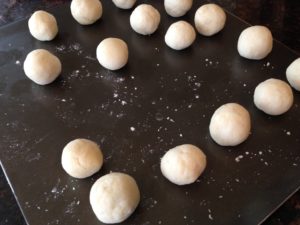
Lefse dough balls
The next day was much easier. We added the flour to the potatoes and worked it into a smooth dough. Mom’s job was to make the little dough balls. Although Bea says they should be about 1/3 cup each, we made ours were a little smaller so the lefse would fit on my pancake griddle.
My job was to roll out the lefse. Dad remembered that Grandma Gunda always used a lot of flour, both on the rolling surface and on the rolling pin. So I used a lot of flour, way more flour than I was expecting. I added flour between every lefse or they started to stick. Grandma was right again.
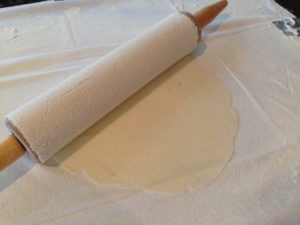
Rolling out lefse
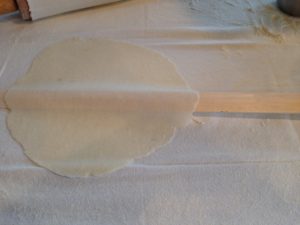
Using a lefse stick
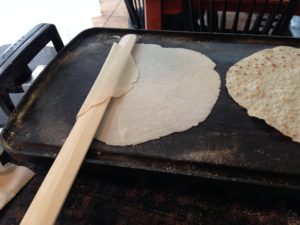
Cooking the lefse
Dad’s job was to cook the lefse, carefully transferring the lefse from the work surface to the griddle with the lefse stick, then flipping it with a spatula when bubbles started to form. We made 34 lefse in a little under 2 hours.
We ate about a dozen of the lefse right away, then froze the rest in two batches in gallon sized ziptop bags. I think I’ll go pull out a bag right now.
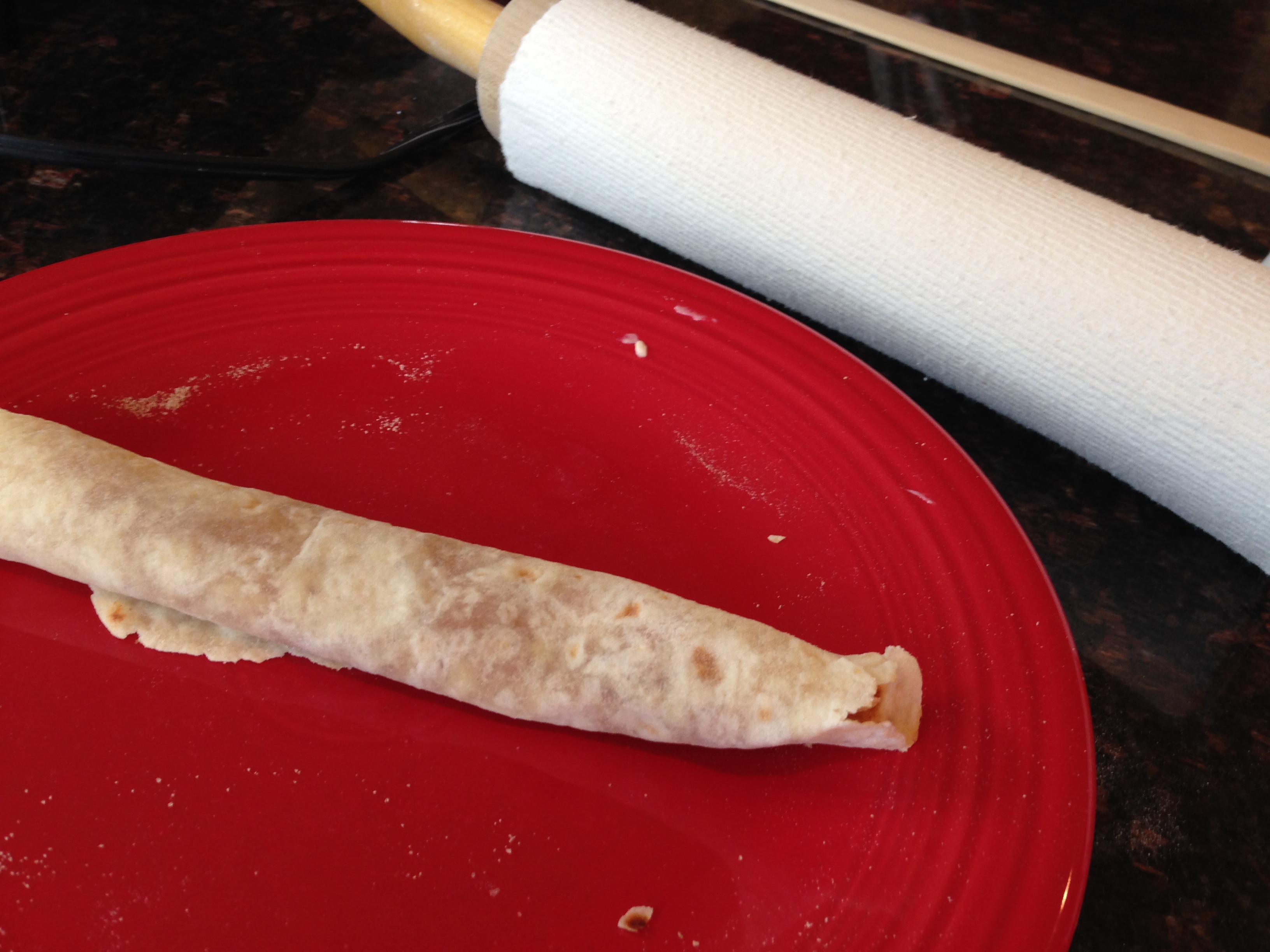
Lefse
Ingredients
- 2 1/2 lbs russet potatoes
- 1/2 cup butter
- 1/2 cup whipping cream
- 1 tablespoon granulated sugar
- 1 teaspoon salt
- 2 1/2 cups all purpose flour
Instructions
- Day 1: Peel and quarter the potatoes. Boil until tender but not mushy, approx. 20 minutes. Drain and cool. Press each potato through a potato ricer into a large bowl. This will make really smooth mashed potatoes without lumps. Add butter, cream, sugar and salt and mash together until smooth. Smooth the top surface of the potatoes inside the bowl, and refrigerate overnight uncovered.
- Day 2: Add the flour and mix with your hands to form a smooth dough. Shape the dough into about 30 balls, using approximately ¼ cup of dough per ball. Lay out the large plastic bag, and top with the terry cloth towel. As the lefse come off the griddle, you’ll place them to one side of the towel then fold the towel and plastic over the lefse. Preheat the griddle to 400-450 degrees, and prepare a surface for rolling out the lefse. Using a cloth covered board (or a cloth taped down to the counter), generously rub flour into the surface. Also rub flour into the rolling pin sock cover. Roll each dough ball to form a lefse 10-12 inches in diameter. They should be very thin. Lift the lefse off the rolling surface using the lefse stick, and place on the griddle.
- Cook until bubbles form and brown spots appear on the cooked side. Flip (with a spatula) and continue cooking until similar brown spots form on the second side. Remove the lefse from the griddle and begin forming a stack on the terry cloth towel, folding the towel and plastic over the lefse stack as you continue cooking the remaining lefse.
- Store lefse in the refrigerator for up to 2 days, or freeze.
Notes
Potato ricer, lefse stick, rolling pin with pastry sock cover, large flat griddle, cloth covered board for rolling, large terry cloth towel, large plastic bag
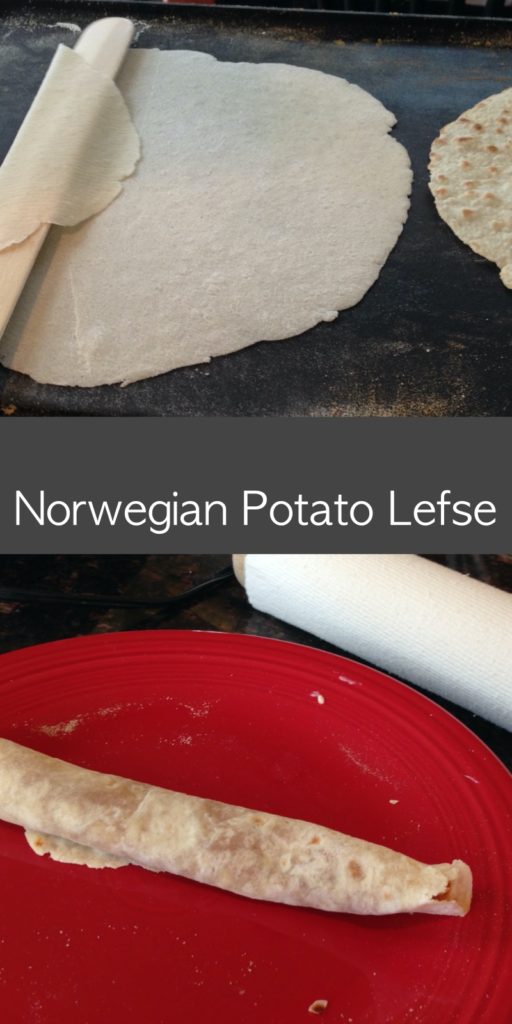
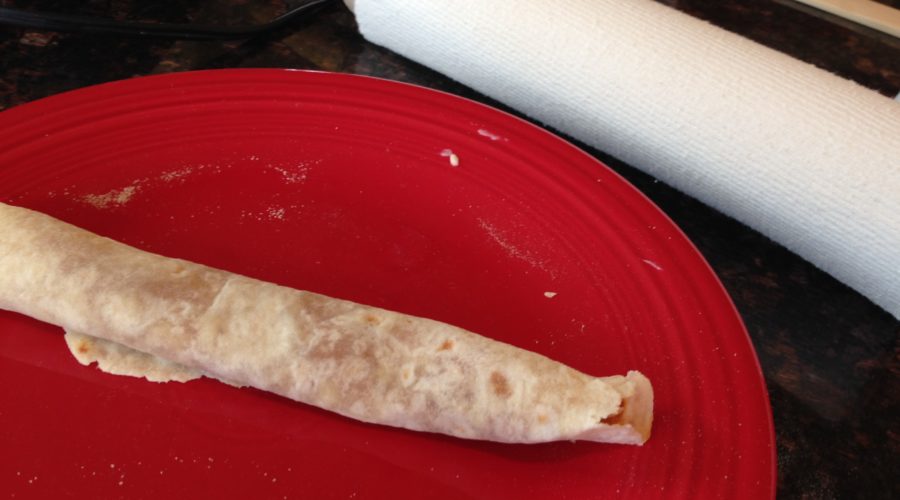
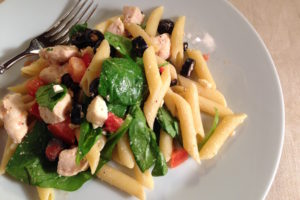
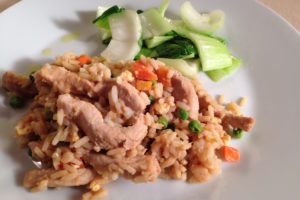
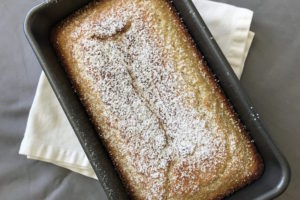
1 Comment
Leave your reply.